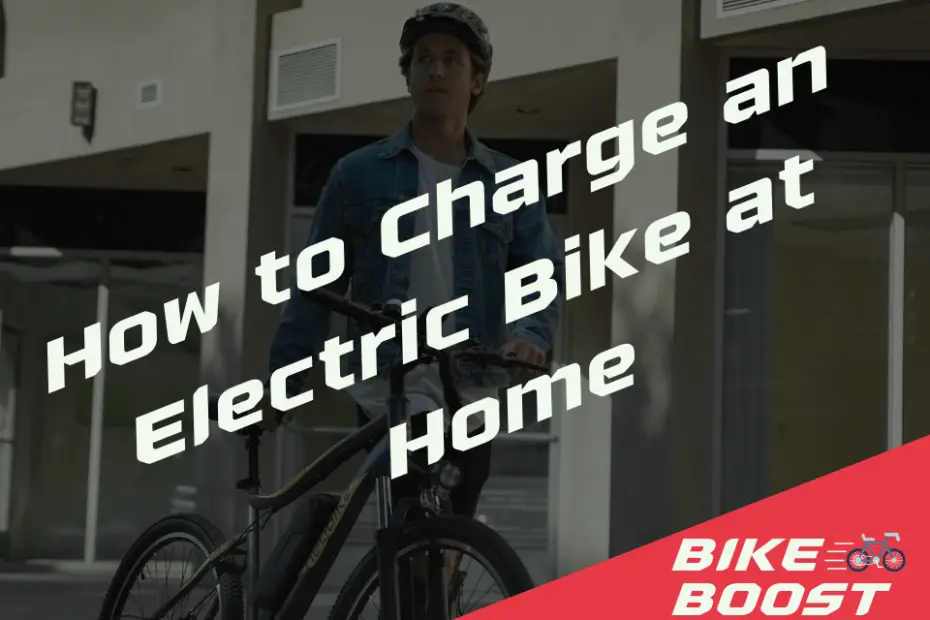We love writing these guides for you and sometimes we are compensated when you use one of our links to buy a product. This doesn’t impact the final price you pay. If you want to learn more about how this works, please see our Affiliate Disclosure page.
As electric bikes gain popularity, more and more people are interested in owning and maintaining these efficient and eco-friendly modes of transportation. One important aspect of owning an electric bike is understanding how to charge it properly. In this guide, we will walk you through the steps to charge your electric bike at home and answer some commonly asked questions along the way. So, let’s dive in!
Key Takeaways:
- Find the right charging equipment and locate a suitable charging area in your home.
- Prepare your electric bike for charging by powering it off and securely connecting the charger.
- Follow safety precautions, avoid overcharging, and refer to your bike’s manual for specific instructions.
Step 1: Find the Right Charging Equipment
Before you start charging your electric bike, it’s crucial to have the right charging equipment. Most electric bikes come with a charger specifically designed for their battery system. If you’ve misplaced or lost your charger, don’t worry! You can easily find compatible chargers online or contact the manufacturer for assistance. Remember, using the correct charger is essential to ensure a safe and efficient charging process.
Step 2: Locate a Suitable Charging Area
Next, find a suitable location in your home to charge your electric bike. Ideally, choose a well-ventilated area away from flammable materials. A garage, shed, or covered outdoor space can work well. Make sure the area has access to a power outlet or extension cord for easy charging.
Step 3: Prepare Your Electric Bike for Charging
Before plugging in your electric bike for charging, it’s essential to follow these preparation steps:
- Power Off: Turn off your electric bike by switching off the power button or removing the key, if applicable.
- Secure Connection: Locate the charging port on your electric bike. It’s usually located near the battery or somewhere easily accessible. Ensure the charging port is clean and free from debris.
- Connect the Charger: Take the charger and plug it into the charging port firmly. Ensure it’s securely connected to avoid interruptions during the charging process.
Step 4: Plug In and Start Charging
Once you’ve connected the charger to your electric bike, it’s time to plug it into a power source and begin charging. Follow these steps:
- Power Outlet: Plug the charger into a nearby power outlet or extension cord. Ensure the power supply is stable and not overloaded.
- Charging Indicator: Most electric bike chargers have an LED indicator that displays the charging status. It’s usually red when charging and turns green when fully charged.
- Charging Time: The charging time varies depending on your electric bike’s battery capacity and the charger’s output. Refer to your bike’s manual for specific charging time recommendations.
Step 5: Safety Precautions and Tips
While charging your electric bike, it’s important to keep the following safety precautions in mind:
- Supervision: Avoid leaving your electric bike unattended while charging. Regularly check on the charging progress to ensure everything is functioning correctly.
- Avoid Water Exposure: Keep your electric bike away from water or wet conditions while charging. This helps prevent any potential electrical hazards.
- Proper Ventilation: Ensure the charging area is well-ventilated to dissipate any heat generated during the charging process.
- Avoid Overcharging: Once your electric bike is fully charged, unplug the charger promptly. Overcharging can degrade the battery’s performance over time.
Conclusion
Charging your electric bike at home is a straightforward process that requires the right equipment and a safe charging environment. By following the steps outlined in this guide, you can ensure that your electric bike remains charged and ready for your next adventure. Remember to always prioritize safety and refer to your electric bike’s manual for specific instructions. Happy riding!
FAQs
Can I Turn My Bike into an Electric Bike?
Yes, it’s possible to convert a regular bike into an electric bike using conversion kits. These kits typically include a motor, battery, controller, and other necessary components. However, it’s crucial to ensure the conversion process is done correctly and safely. Check out our guide on turning your bike into an electric bike for more information.
Can You Charge an E-Bike While Riding?
Charging an electric bike while riding is generally not recommended. Most electric bikes require you to connect the charger to a power source for charging. However, there are some innovative models equipped with regenerative braking systems that can recharge the battery while you ride. Check your electric bike’s specifications to see if it supports charging while riding.
Can I Ride an Electric Bike on the Sidewalk?
The regulations regarding riding electric bikes on sidewalks vary depending on your location. In some areas, it may be allowed, while in others, it’s prohibited. It’s important to familiarize yourself with the local laws and regulations regarding electric bike usage. Visit our guide on riding electric bikes on sidewalks for more details.
Which is Better: Electric Bike or Electric Scooter?
The choice between an electric bike and an electric scooter depends on your specific needs and preferences. Electric bikes offer the benefits of pedaling assistance and a more traditional biking experience. Electric scooters, on the other hand, provide a compact and convenient mode of transportation. Explore our guide on electric bikes vs. electric scooters for a detailed comparison.
Andy is an avid cyclist who enjoys nothing more than a ride out in the hills. Competing in track, road, time trial and mountain bike events in the past, he prefers slower rides out with his family these days.

